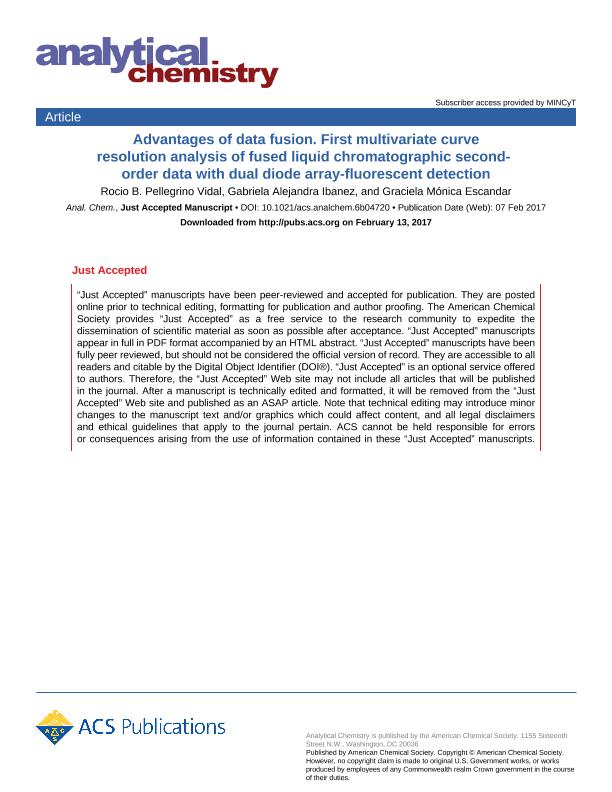Artículo
Advantages of Data Fusion: First Multivariate Curve Resolution Analysis of Fused Liquid Chromatographic Second-Order Data with Dual Diode Array-Fluorescent Detection
Fecha de publicación:
03/2017
Editorial:
American Chemical Society
Revista:
Analytical Chemistry
ISSN:
0003-2700
Idioma:
Inglés
Tipo de recurso:
Artículo publicado
Clasificación temática:
Resumen
For the first time, liquid chromatography-diode array detection (LC-DAD) and liquid-chromatography fluorescence detection (LC-FLD) second-order data, collected in a single chromatographic run, were fused and chemometrically processed for the quantitation of coeluting analytes. Two different experimental mixtures composed of fluorescent and nonfluorescent endocrine disruptors were analyzed. Adequate pretreatment of the matrices before their fusion was crucial to attain reliable results. Multivariate curve resolution-alternating least-squares (MCR-ALS) was applied to LC-DAD, LC-FLD, and fused LC-DAD-FLD data. Although different degrees of improvement are observed when comparing the fused matrix results in relation to those obtained using a single detector, clear benefits of data fusion are demonstrated through: (1) the obtained limits of detection in the ranges 2.1-24 ng mL-1 and 0.9-6.3 ng mL-1 for the two evaluated systems and (2) the low relative prediction errors, below 7% in all cases, indicating good recoveries and precision. The feasibility of fusing data and its advantages in the analysis of real samples was successfully assessed through the study of spiked tap, underground, and river water samples.
Palabras clave:
Chemometrics
,
Mcr-Als
,
Hplc-Dad-Fld
,
Second-Order Data Fusion
Archivos asociados
Licencia
Identificadores
Colecciones
Articulos(IQUIR)
Articulos de INST.DE QUIMICA ROSARIO
Articulos de INST.DE QUIMICA ROSARIO
Citación
Pellegrino Vidal, Rocio; Ibañez, Gabriela Alejandra; Escandar, Graciela Monica; Advantages of Data Fusion: First Multivariate Curve Resolution Analysis of Fused Liquid Chromatographic Second-Order Data with Dual Diode Array-Fluorescent Detection; American Chemical Society; Analytical Chemistry; 89; 5; 3-2017; 3029-3035
Compartir
Altmétricas




